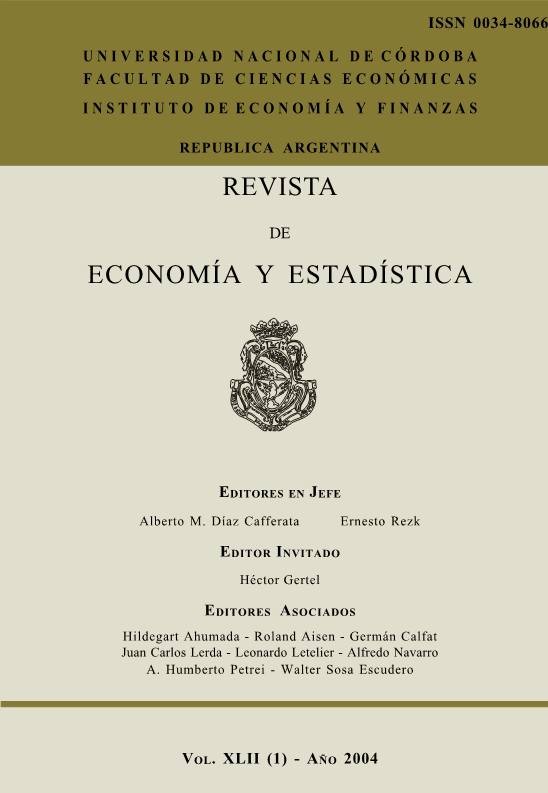Free higher education and equity
DOI:
https://doi.org/10.55444/2451.7321.2004.v42.n1.3802Keywords:
higher education , ArgentinaAbstract
Higher education has an increasing importance in shaping countries standardof living and socio - economic conditions of its citizens. Governmentsaround the world contribute to its financing in the belief that educationis a merit good, provides external benefits and help to achieve a moreegalitarian society. However, the presumption that a relevant amount ofstate aid or even gratuity could not be enough to reach the equality ofeducational opportunities gave rise to several studies aimed at identifyingthe true beneficiary of the subsidy hidden in public funding. In order toexplore the income distribution effects of state aid this paper groupshouseholds according to income levels, estimates the benefits that receiveeach of them measured as free enrollment, on the one hand, and contributionsto financing through the tax system on the other, and thus obtains the nettransfers. Its findings suggest that in Argentina higher education seems tohave both a moderate progressive redistribution effect from the rich andregressive from the poor towards the middle class. A behaviour that isexplained because tax system is progressive, poor have access barriers,private institutions offer good quality options to wealthy citizens and alarge fraction of people belonging to middle class attend the public highereducation sector.
Downloads
Downloads
Published
Issue
Section
License
Copyright (c) 2004 José A. Delfino

This work is licensed under a Creative Commons Attribution-NonCommercial-NoDerivatives 4.0 International License.
Authors who have publications with this journal agree to the following terms:
Authors retain their copyright and grant the journal the right of first publication of their work, which is simultaneously subject to the Creative Commons Attribution-NonCommercial-NoDerivatives 4.0 International License that allows third parties to share the work provided that its author and first publication in this journal are indicated.
Authors may adopt other non-exclusive licensing arrangements for distribution of the published version of the work (e.g. depositing it in an institutional telematic archive or publishing it in a monographic volume) as long as the initial publication in this journal is indicated.
Authors are allowed and encouraged to disseminate their work via the Internet (e.g. in institutional telematic archives or on their website) before and during the submission process, which can lead to interesting exchanges and increase citations of the published work. (See The Open Access Effect)














